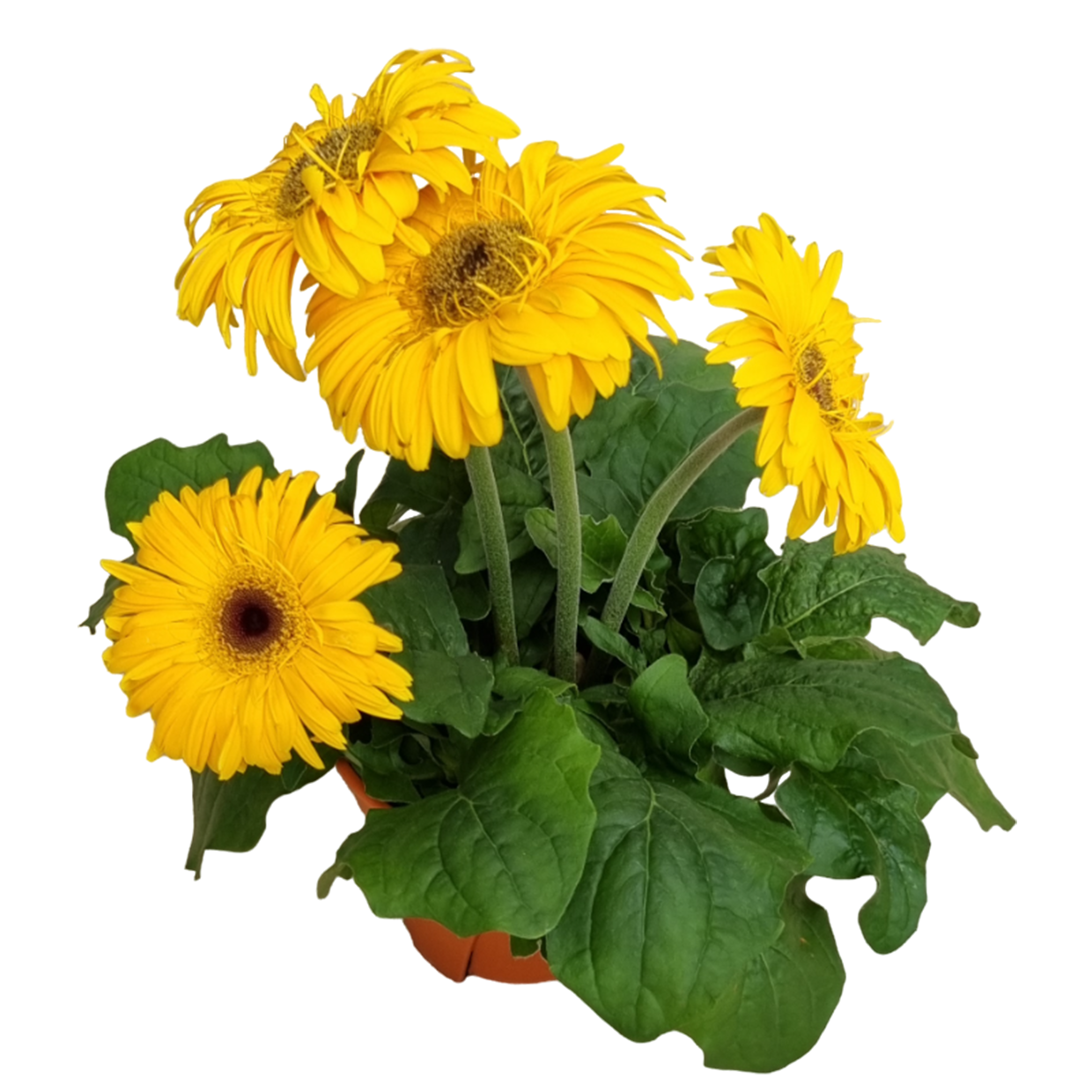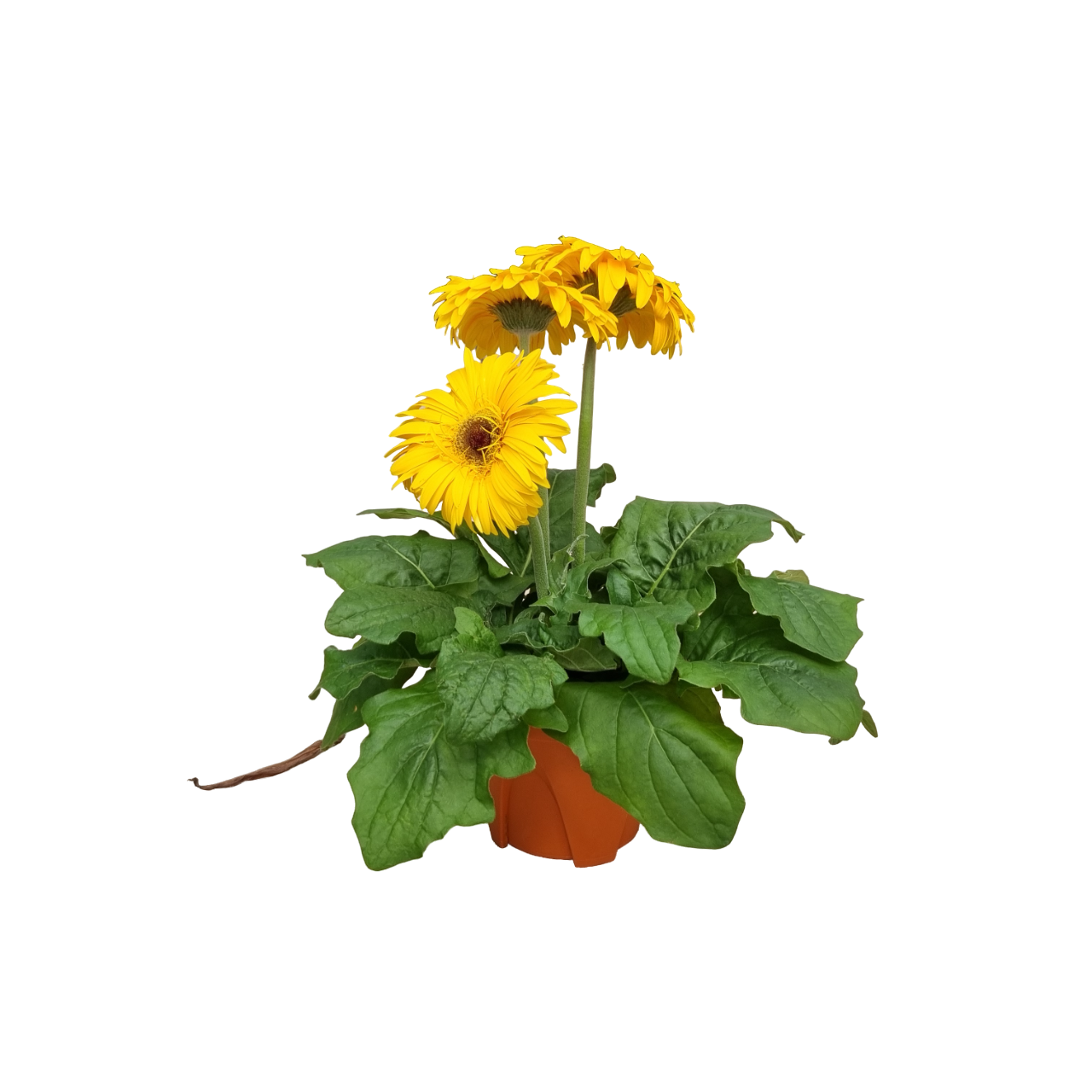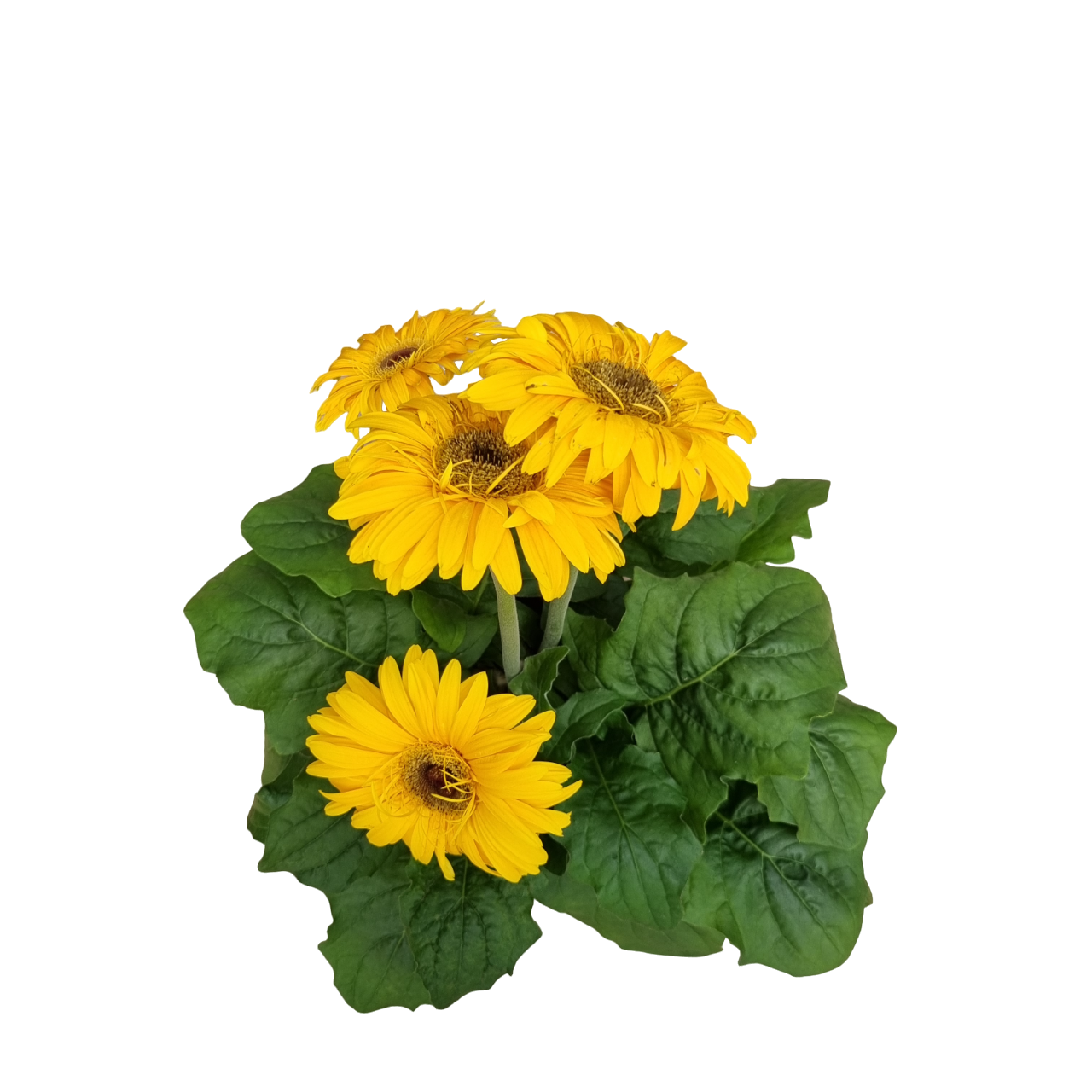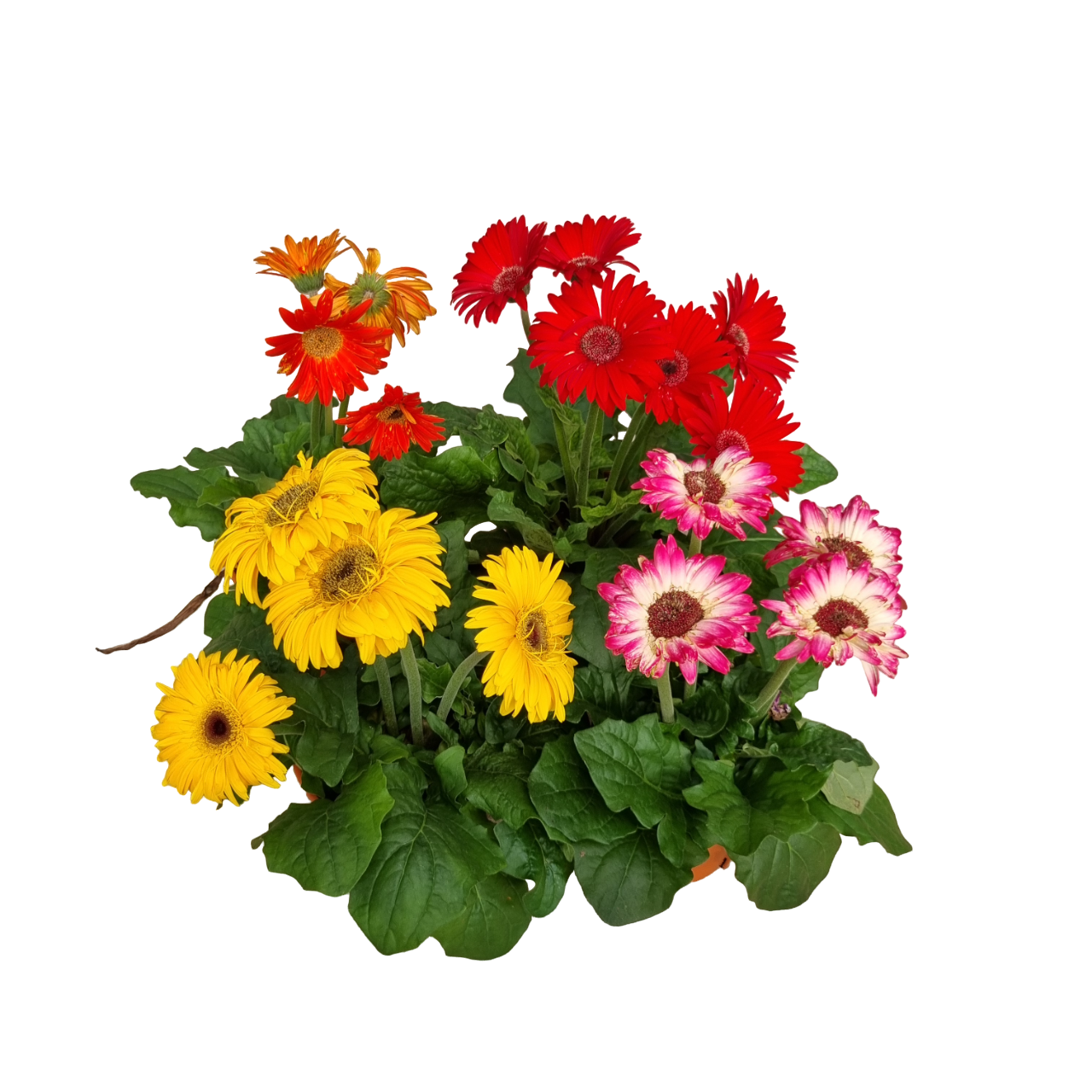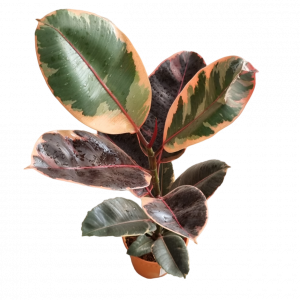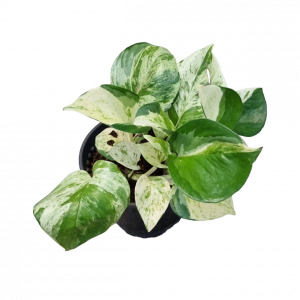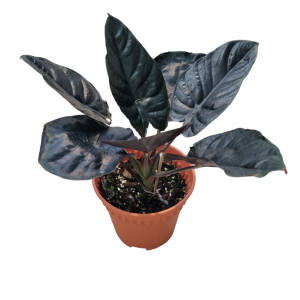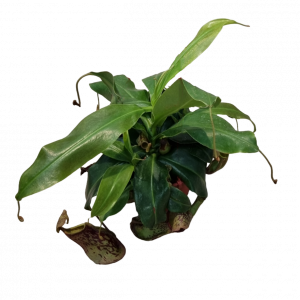Gerbera jamesonii, commonly known as the African Daisy, is a bright and vibrant flowering plant native to South Africa. Renowned for its large, daisy-like blooms in a stunning range of colours, including shades of red, orange, pink, yellow, and white, this perennial is widely appreciated for its striking appearance. The plant typically grows to a height of 30–45 cm and has dark green, slightly serrated leaves that form a rosette at the base. Gerbera daisies are well known for their long-lasting flowers, which make excellent cut flowers for bouquets and floral arrangements. As a member of the Asteraceae family, Gerberas are highly versatile and can be used in borders, containers, or as potted plants, adding cheerful colour and beauty to gardens and indoor spaces alike.
Plant Care Guide:
Light: Gerberas thrive in full sun and require at least 6 hours of direct sunlight each day to produce an abundance of flowers. Ensure they are placed in a sunny spot for optimal growth and flowering.
Watering: Water regularly, keeping the soil evenly moist but not waterlogged. Allow the top layer of soil to dry out slightly between waterings to prevent root rot. Ensure that the container or garden bed has good drainage.
Soil: Well-draining, fertile soil is ideal for Gerberas. A slightly acidic to neutral pH (5.5–7) is preferred. A mix of loamy or sandy soil with added organic matter, such as compost, will support healthy root development.
Humidity: Gerberas prefer moderate humidity but are adaptable to average household conditions. However, excessive moisture on the leaves or around the base of the plant should be avoided to prevent fungal infections.
Temperature: Gerberas prefer warm temperatures, ideally between 18–24°C. They should be protected from cold temperatures below 10°C and are best suited to tropical or subtropical climates.
Fertilising: Apply a balanced, slow-release fertiliser or a water-soluble fertiliser with equal proportions of nitrogen (N), phosphorus (P), and potassium (K) to encourage strong growth and vibrant blooms.
Pruning: Deadhead spent flowers regularly to promote continuous blooming and prevent the plant from becoming leggy. Trim any damaged or yellowing leaves to maintain a neat appearance and encourage new growth.
Pests: While generally pest-resistant, Gerberas can occasionally attract aphids, spider mites, or fungal diseases. Regularly inspect the plant for pests, and treat with insecticidal soap or neem oil if necessary. Ensure good air circulation around the plant to reduce the risk of fungal issues.Lighting: Full Sun
Watering: Water Moderately
Watering Frequency: When top layer of soil is dry
Powdery Mildew: Powdery mildew is a fungal disease that affects a wide range of plants, causing a white, powdery growth to appear on leaves, stems, and flowers. The disease is most common in warm, humid conditions and can lead to stunted growth, leaf drop, and reduced yields. It can be prevented by providing good air circulation, avoiding overhead watering, and treating infected plants with fungicides or other management strategies..
Aphids: Aphids are tiny, pear-shaped insects that range in color from green to yellow to black. They feed on the sap of plants using their sharp, piercing mouthparts and can cause stunted growth, curling leaves, and other damage. They reproduce quickly and can form large colonies, making them a common pest in gardens and greenhouses..
RYNAN Flowermate 240 NPK 14-14-14+TE : Every 3 Months.


